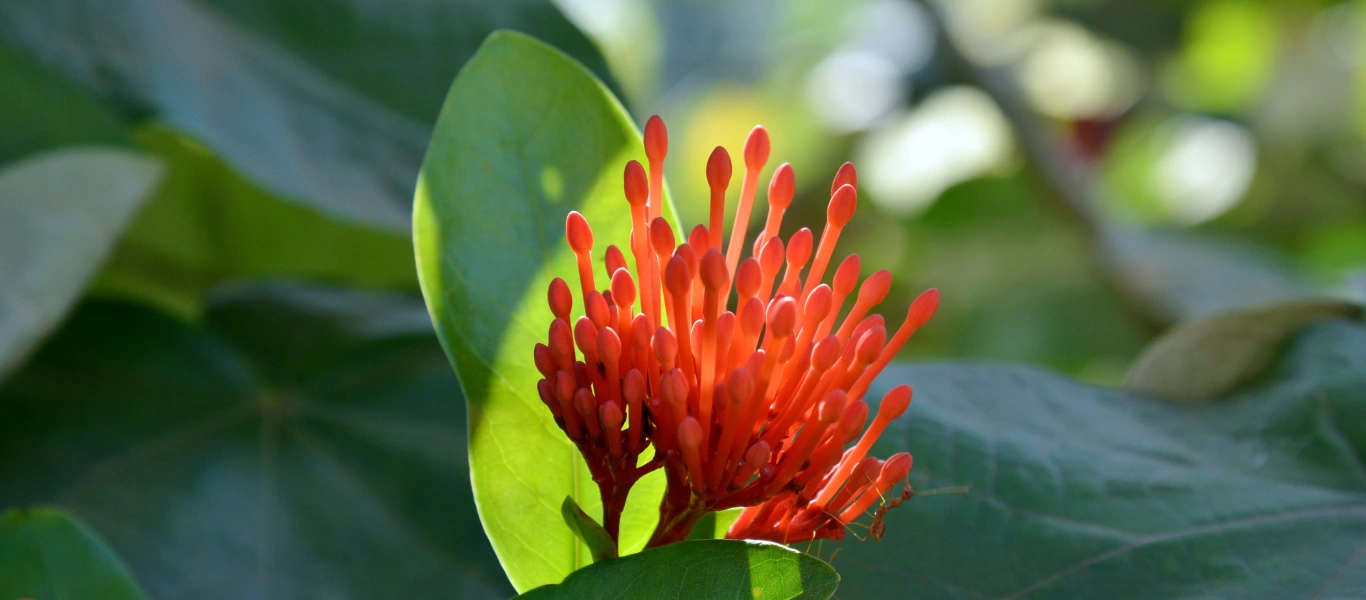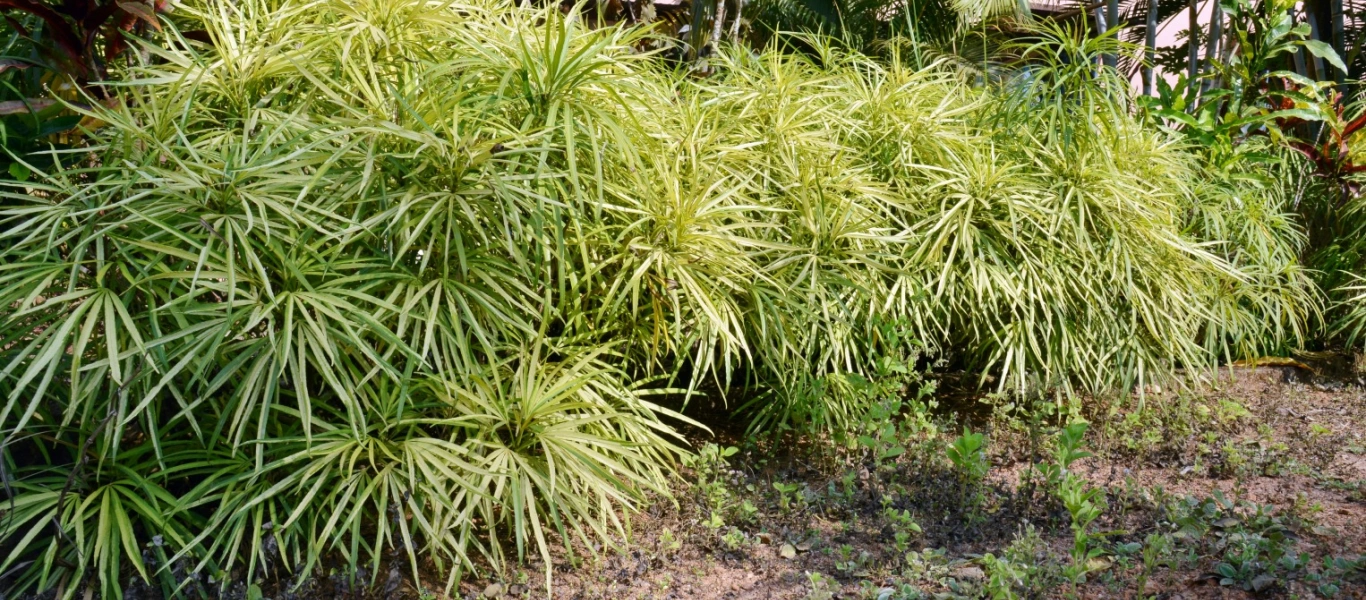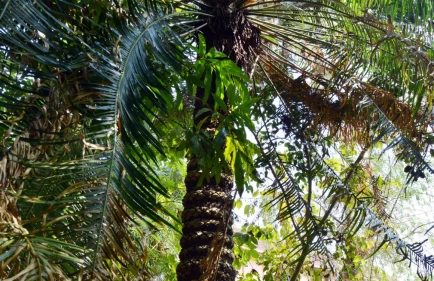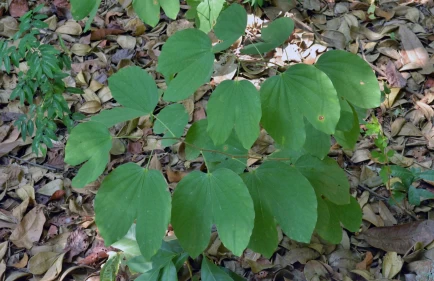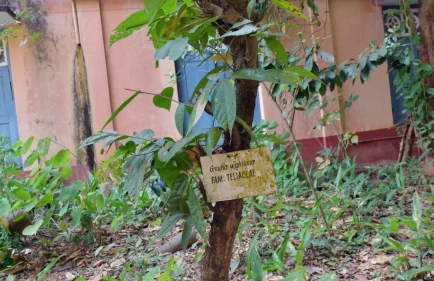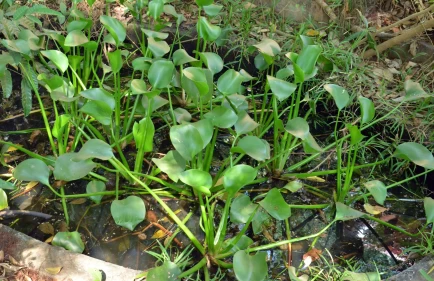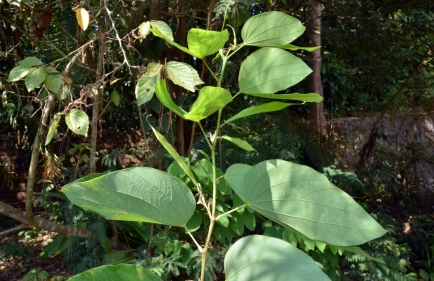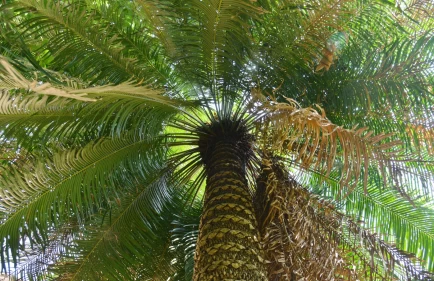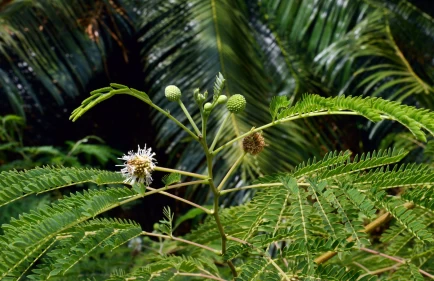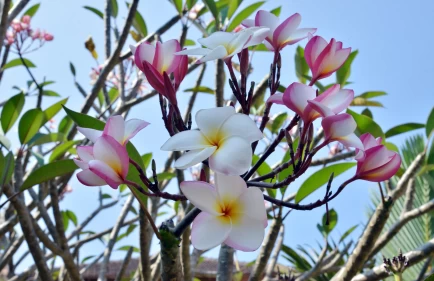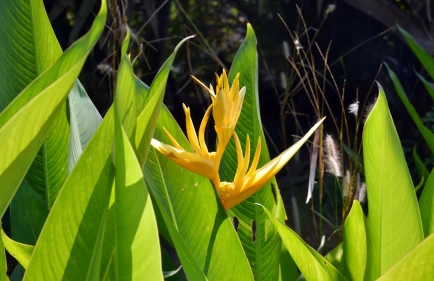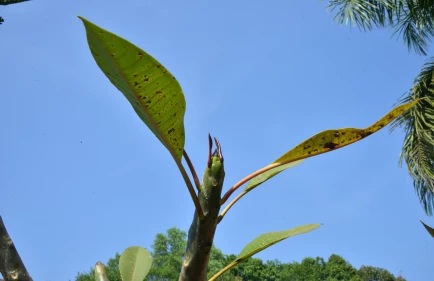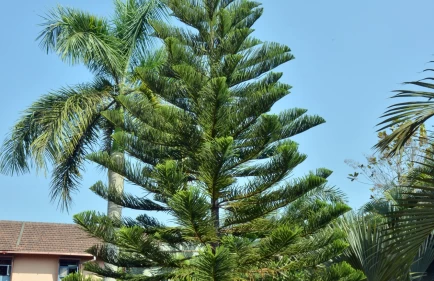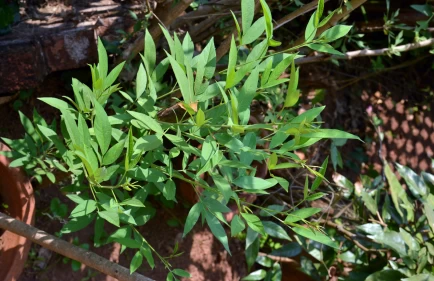

ST PHILOMENA COLLEGE
TREES FOUND IN CAMPUS

Morinda citrifolia is a fruit-bearing tree in the coffee family, Rubiaceae. Its native range extends across Southeast Asia and Australasia, and was spread across the Pacific by Polynesian sailors. The species is now cultivated throughout the tropics and widely naturalized. Among some 100 names for the fruit across different regions are the more common English names of great morinda , Indian mulberry, noni, beach mulberry, and cheese fruit.
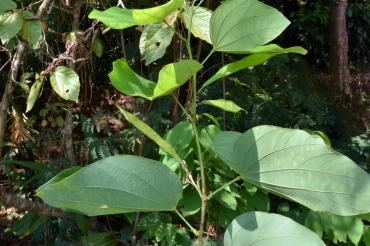
Kingdom: Plantae Clade: Angiosperms Order: Fabales Family: Fabaceae Genus: Bauhinia Species: B. variegatahabitatB. variegata is...
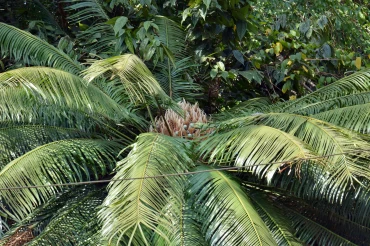
Thickets on hillsides on islands, sparse forests on mainland; 100- 500 m. Forest, clay-rich fertile soils, moderate to deep shade areas This very symmetrical plant supports a crown of shiny, dark green leaves on a thick shaggy trunk that is typically about 20 cm(7.9 in) in diameter, sometimes wider. The trunk is very low to subterranean in young plants, but lengthens above ground with age. It can grow into very old specimens with 6–7 m (over 20 feet) of trunk; however, the plant is very slow-growing and requires about 50–100 years to achieve this height. Trunks can branch several times, thus producing multiple heads of leaves.
Gallery
Digital Museum

Digital Museum- Zoology
Zoology Museum was established in 1968 with a vision to raise awareness of fauna. The Museum has a rich collection of reptiles and animal specimens. They include Phylum Protozoans to mammals.
Visit
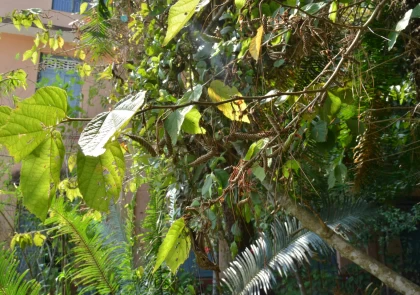
Digital Museum- Botany
Botany Museum came into existence in 1967with a vision to provide awareness of the region’s flora to students and the general public.
Visit
Medicinal Plants available in the Campus
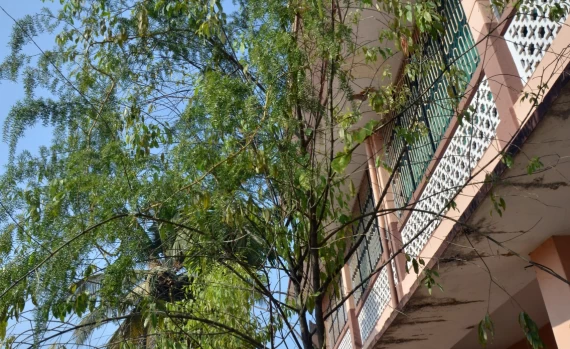
Asparagus racemosus(Shathavari)-ಶತಾವರಿ
It is a scandent,much branched,spinous undershrub with tuberous root.it grows 1-2m tall roots are fibrous and tuberous.it has pine needle like phylloclades,uniform shiny green in color.white flowers produced in September. A study of ancient classical ayurvedic literature claimed several therapeutic attributes.Root of A.racemosus has been referred as bitter sweet ,emollient,cooling,nervine tonic,constipating,galactogogue and aphrodisiac,diurectic,rejuvating,carminative,stomachic,antiseptic and as a tonic
Read More
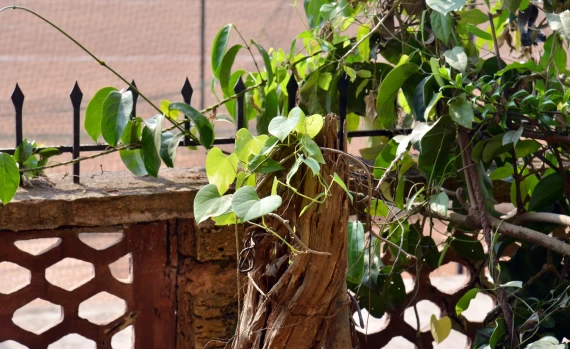
Tinospora cordifolia-ಅಮೃತ ಬಳ್ಳಿ
Habitat: T. cordifolia is a climbing shrub native to lower elevation in tropical areas of the Indian subcontinent and climbs numerous types of trees. It prefers wide range of soil, acid to alkaline and it needs moderate level of soil moisture. Tinospora cordifolia (Guduchi) is one of the important dioecious plants. In Hindi, the plant is commonly known as Giloe which is a Hindu mythological term that refers to the heavenly elixir that has saved celestial beings from old age and kept them eternally young. In Ayurveda, it is designated as Rasayana drug recommended to enhance general body resistance, promote longevity and as antistress and adaptogen . The fact that it is called “Amrita” signifies its use for revitalization and its importance in Ayurveda.
Read More
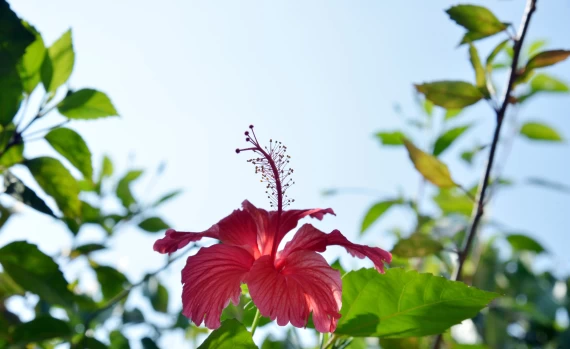
Hibiscus rosa-sinensis-ದಾಸವಾಳ
Habitat- Hibiscus is easily grown over a wide range of conditions. Their diverse habitats range from wetlands to savannahs and woodlands. Description- Hibiscus rosa-sinensis is a bushy, evergreen shrub or small tree growing 2.5–5 m (8–16 ft) tall and 1.5–3 m (5–10 ft) wide, with glossy leaves and solitary, brilliant red flowers in summer and autumn. The genus includes both annual and perennial herbaceous plants, as well as woody shrubs and small trees.The leaves are alternate, ovate to lanceolate, often with a toothed or lobed margin (dentate). The flowers are large, conspicuous, trumpet-shaped, with five or more petals, color from white to pink, red, blue, orange, peach, yellow or purple, and from 4–18 cm broad.
Read More
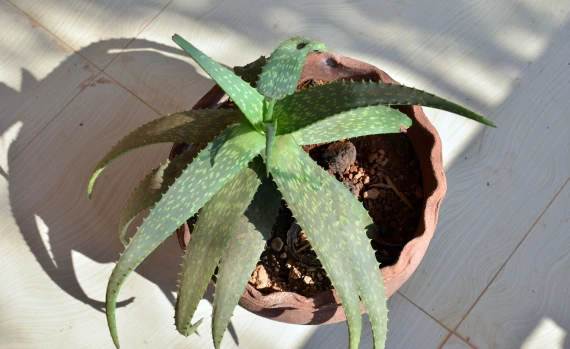
Aloe vera-ಲೋಳೆ ಸರ
Aloe species are mostly inhabitants of arid climates, and are widely distributed in Africa, India, and other arid areas. The largest number of Aloe species is approximately 140, and most are found in South Africa. Aloe vera is a stemless or very short-stemmed plant growing to 60–100 centimetres (24–39 inches) tall, spreading by offsets. The leaves are thick and fleshy, green to grey-green, with some varieties showing white flecks on their upper and lower stem surfaces. The margin of the leaf is serrated and has small white teeth. The flowers are produced in summer on a spike up to 90 cm (35 in) tall, each flower being pendulous, with a yellow tubular corolla 2–3 cm long.
Read More

Jatropha gossypiifolia-ಚಿಕ್ಕ ಕಾಡ ಹರಳು
Habitat Jatropha gossypiifolia, commonly known as bellyache bush, black physicnut or cotton-leaf physicnut, is a species of flowering plant in the family, Euphorbiaceae.. The species is native to Mexico, Philippines, South America, Gujarat State (India), and the Caribbean islands. It grows to 2.5–4 m (8.2–13.1 ft) high. The three lobed leaves are purple and sticky when young and become bright green with age. The small red flowers with yellow centres appear in clusters. These are followed by cherry-sized seed pods that are poisonous.
Read More
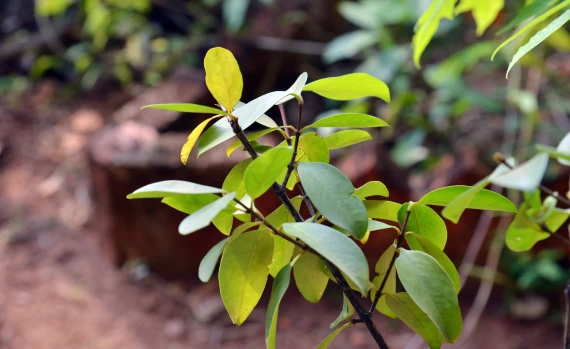
Garcinia Indica-ಪುನರ್ಪುಳಿ
Kingdom : PlantaeClade : AngiospermsOrder : MalpighialesFamily: ClusiaceaeGenus: GarciniaSpecies: G. indica Habit:Garcinia indica is indigenous...
Read More
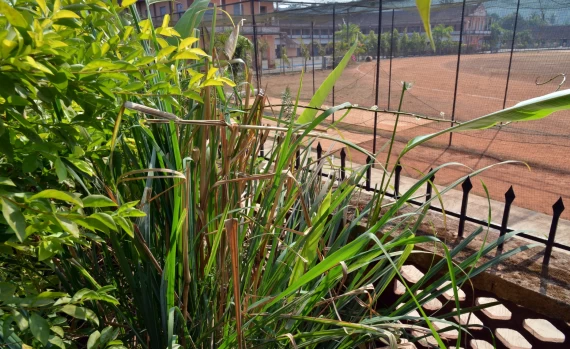
Cymbopogon citratus-ಮಜ್ಜಿಗೆ ಹುಲ್ಲು
Cymbopogon citratus can be found cultivated and naturalized throughout the tropics and warm subtropics, in warm and humid habitats and along roadsides.
Read More

Calotropis gigantea-ಎಕ್ಕ
Kingdom : PlantaeClade: AngiospermsOrder: GentianalesFamily: Apocynaceae Genus: CalotropisSpecies: C. giganteaCalotropis gigantea is a weed that grows...
Read More
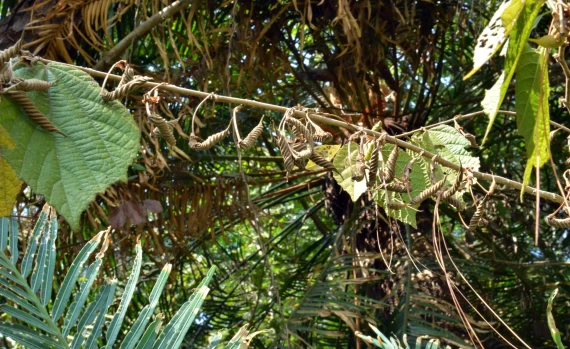
Helicteres isora-ಎಡಮುರಿ
Kingdom : Plantae Clade: AngiospermsOrder: MalvalesFamily: MalvaceaeGenus: HelicteresSpecies: H. isoraHelicteres isora, sometimes called the Indian...
Read More
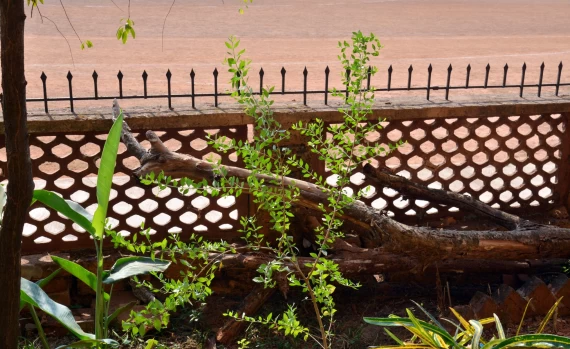
Lawsonia inermis-ಗೋರಂಟಿ
Kingdom : PlantaeClade: AngiospermsOrder: MyrtalesFamily: LythraceaeSubfamily: LythroideaeGenus: LawsoniaSpecies: L. inermisThe henna...


